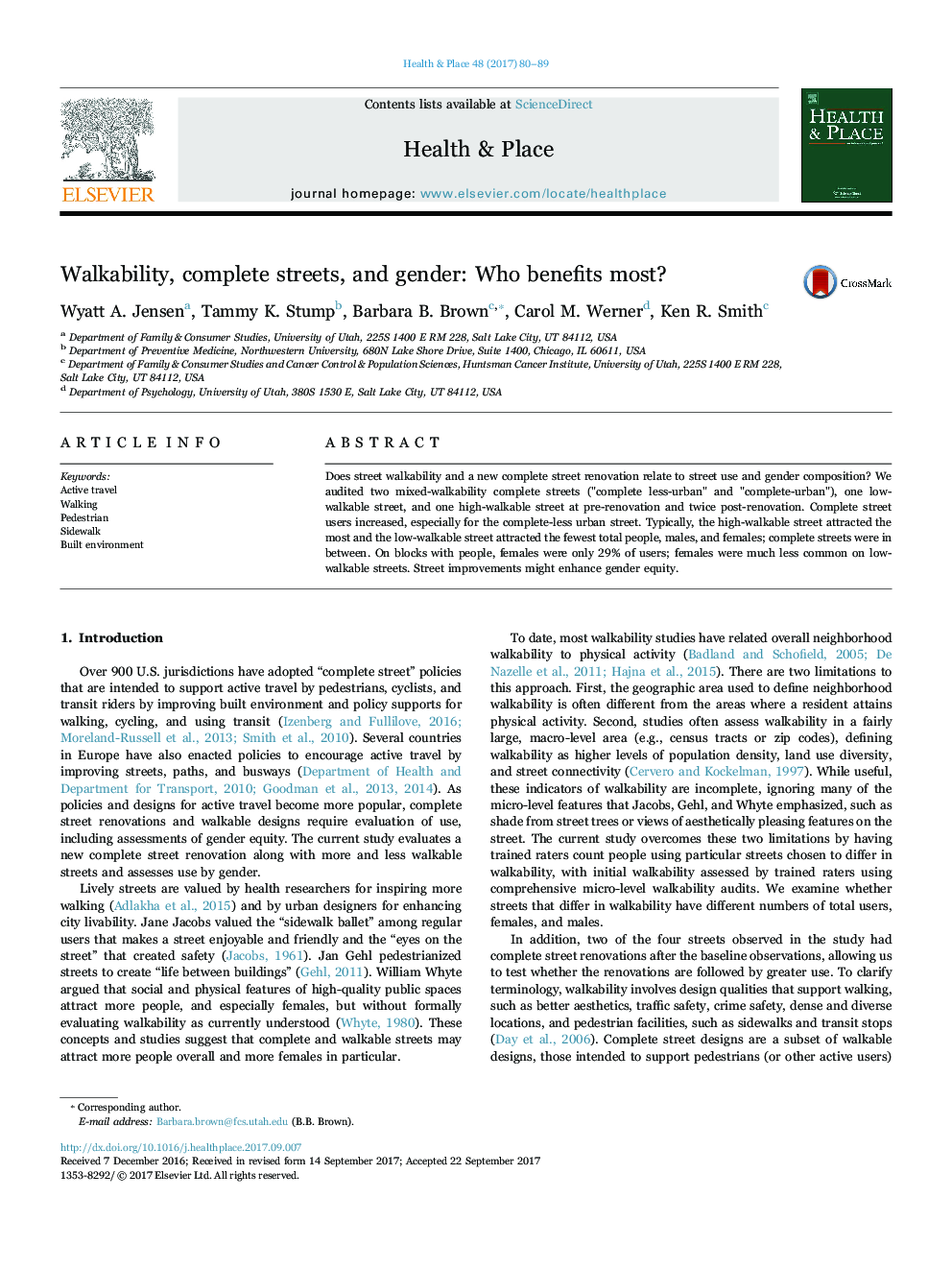| Article ID | Journal | Published Year | Pages | File Type |
|---|---|---|---|---|
| 7457108 | Health & Place | 2017 | 10 Pages |
Abstract
Does street walkability and a new complete street renovation relate to street use and gender composition? We audited two mixed-walkability complete streets ("complete less-urban" and "complete-urban"), one low-walkable street, and one high-walkable street at pre-renovation and twice post-renovation. Complete street users increased, especially for the complete-less urban street. Typically, the high-walkable street attracted the most and the low-walkable street attracted the fewest total people, males, and females; complete streets were in between. On blocks with people, females were only 29% of users; females were much less common on low- walkable streets. Street improvements might enhance gender equity.
Related Topics
Health Sciences
Medicine and Dentistry
Public Health and Health Policy
Authors
Wyatt A. Jensen, Tammy K. Stump, Barbara B. Brown, Carol M. Werner, Ken R. Smith,
